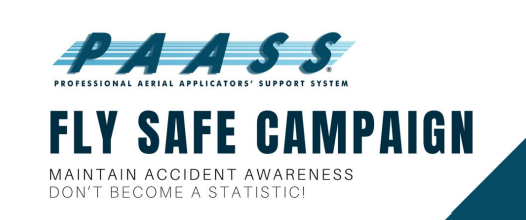FLY SAFE CAMPAIGN
There were three mid-air collisions in 2024. In each accident, one pilot survived while the other lost their life. In two of the accidents, both aircraft worked for the same operation, and in one of those accidents the two aircraft were working the same field. Make sure you communicate with all aircraft working in your area, whether they work with you or not. Use radio frequency 122.925, but keep your transmissions limited to only safety related information – who you are, where you are, and what you intend to do. Unnecessary chatter creates a distraction, increases the chances of missing an important transmission, and discourages others from using the frequency.
ADS-B can reduce the risks of having a mid-air collision, but it only works if all aircraft in the area are equipped with it. ADS-B In can be setup to provide an audible warning when another ADS-B equipped aircraft enters a user-specified airspace around your aircraft. You don’t need to monitor your ADS-B to look for other ADS-B equipped aircraft – the warning will let you know when one nears your position. Don’t let ADS-B, radios, or any other technology distract you though – stay in condition yellow (focused on flight tasks and maintaining situational awareness, searching for potential threats).
Ferry at a safe altitude. The slogan “ferry above five and stay alive” may no longer be relevant in many areas – large turbine aircraft are turning at heights greater than 500 feet AGL. This means ferrying at 500 feet is no guarantee you’ll avoid these turning aircraft on your way to and from your field. In these areas, ferrying closer to 1,000 feet may be safer. Final point – you must keep your head out of the cockpit and remain constantly vigilant. Pay attention to your surroundings and keep scanning for other aircraft as well as other threats.
Check TFRs
Always check Temporary Flight Restriction (TFR) NOTAMs before flying! Make sure you have proof of a preflight TFR briefing from sources such as FSS or www.1800wxbrief.com
Don’t Forget to Communicate
Communicate with other ag aircraft using 122.925 MHz – limit your transmissions to announcing who you are, where you are, and what you plan to do.
Make a Fly Safe Resolution Today!







